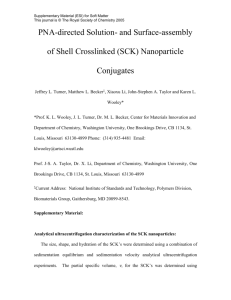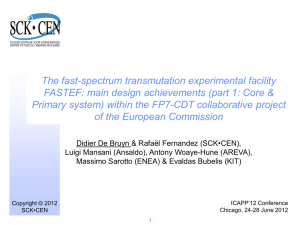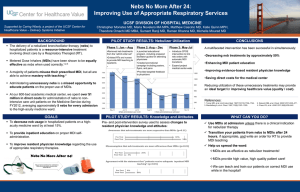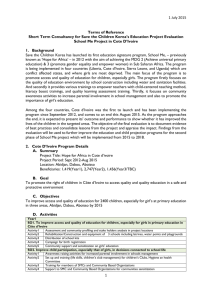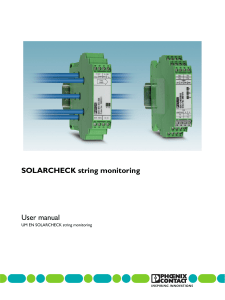Makerere-Sida-ARM-Science-Day-CoVAB
advertisement
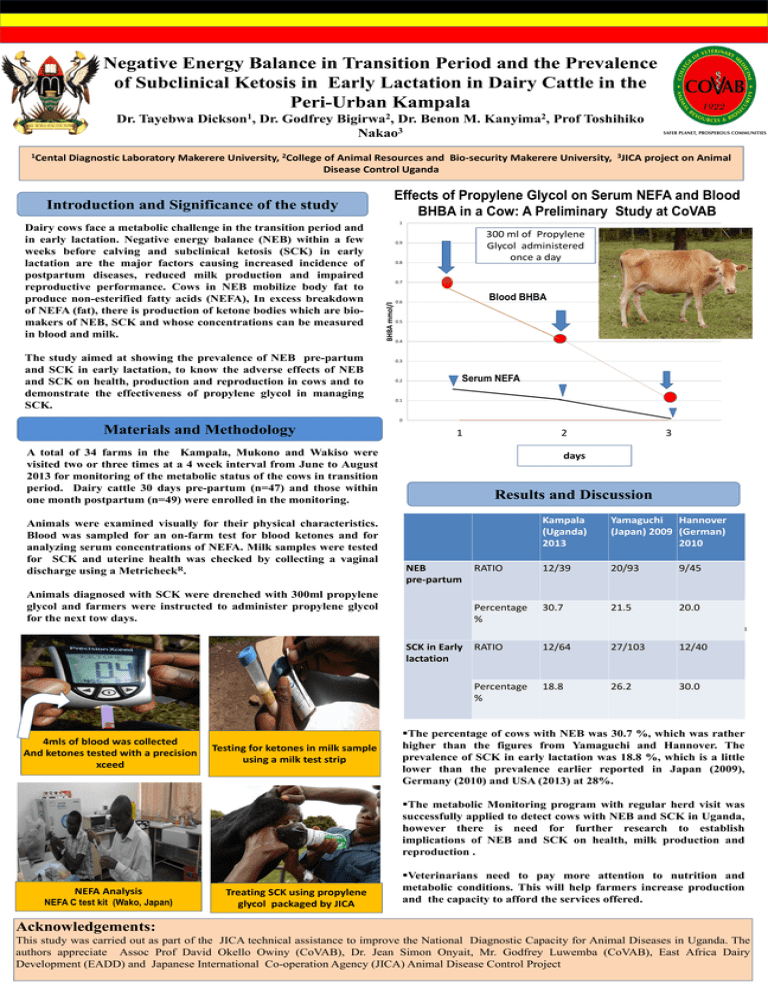
Negative Energy Balance in Transition Period and the Prevalence of Subclinical Ketosis in Early Lactation in Dairy Cattle in the Peri-Urban Kampala Dr. Tayebwa Dr. Godfrey 2 Bigirwa , Dr. Benon M. Nakao3 2 Kanyima , Prof Toshihiko Diagnostic Laboratory Makerere University, 2College of Animal Resources and Bio-security Makerere University, 3JICA project on Animal Disease Control Uganda Introduction and Significance of the study Dairy cows face a metabolic challenge in the transition period and in early lactation. Negative energy balance (NEB) within a few weeks before calving and subclinical ketosis (SCK) in early lactation are the major factors causing increased incidence of postpartum diseases, reduced milk production and impaired reproductive performance. Cows in NEB mobilize body fat to produce non-esterified fatty acids (NEFA), In excess breakdown of NEFA (fat), there is production of ketone bodies which are biomakers of NEB, SCK and whose concentrations can be measured in blood and milk. The study aimed at showing the prevalence of NEB pre-partum and SCK in early lactation, to know the adverse effects of NEB and SCK on health, production and reproduction in cows and to demonstrate the effectiveness of propylene glycol in managing SCK. Effects of Propylene Glycol on Serum NEFA and Blood BHBA in a Cow: A Preliminary Study at CoVAB 1 300mL glycol 300 ml ofpropylene Propylene Glycol administered once a day 0.9 0.8 0.7 BHBA mmol/l 1Cental 1 Dickson , Blood BHBA 0.6 0.5 Series2 Series1 0.4 0.3 0.2 Serum NEFA 0.1 0 Materials and Methodology 1 A total of 34 farms in the Kampala, Mukono and Wakiso were visited two or three times at a 4 week interval from June to August 2013 for monitoring of the metabolic status of the cows in transition period. Dairy cattle 30 days pre-partum (n=47) and those within one month postpartum (n=49) were enrolled in the monitoring. Animals were examined visually for their physical characteristics. Blood was sampled for an on-farm test for blood ketones and for analyzing serum concentrations of NEFA. Milk samples were tested for SCK and uterine health was checked by collecting a vaginal discharge using a MetricheckR. Animals diagnosed with SCK were drenched with 300ml propylene glycol and farmers were instructed to administer propylene glycol for the next tow days. 2 days Results and Discussion NEB pre-partum RATIO Testing for ketones in milk sample using a milk test strip Kampala (Uganda) 2013 Yamaguchi Hannover (Japan) 2009 (German) 2010 12/39 20/93 9/45 Percentage 30.7 21.5 20.0 % The results above show the prevalence of NEB and SCK attained in comparrison to the data collected from other countries SCK in Early RATIO 12/64 27/103 12/40 lactation Percentage % 4mls of blood was collected And ketones tested with a precision xceed 3 18.8 26.2 30.0 The percentage of cows with NEB was 30.7 %, which was rather higher than the figures from Yamaguchi and Hannover. The prevalence of SCK in early lactation was 18.8 %, which is a little lower than the prevalence earlier reported in Japan (2009), Germany (2010) and USA (2013) at 28%. The metabolic Monitoring program with regular herd visit was successfully applied to detect cows with NEB and SCK in Uganda, however there is need for further research to establish implications of NEB and SCK on health, milk production and reproduction . NEFA Analysis NEFA C test kit (Wako, Japan) Treating SCK using propylene glycol packaged by JICA Veterinarians need to pay more attention to nutrition and metabolic conditions. This will help farmers increase production and the capacity to afford the services offered. Acknowledgements: This study was carried out as part of the JICA technical assistance to improve the National Diagnostic Capacity for Animal Diseases in Uganda. The authors appreciate Assoc Prof David Okello Owiny (CoVAB), Dr. Jean Simon Onyait, Mr. Godfrey Luwemba (CoVAB), East Africa Dairy Development (EADD) and Japanese International Co-operation Agency (JICA) Animal Disease Control Project

